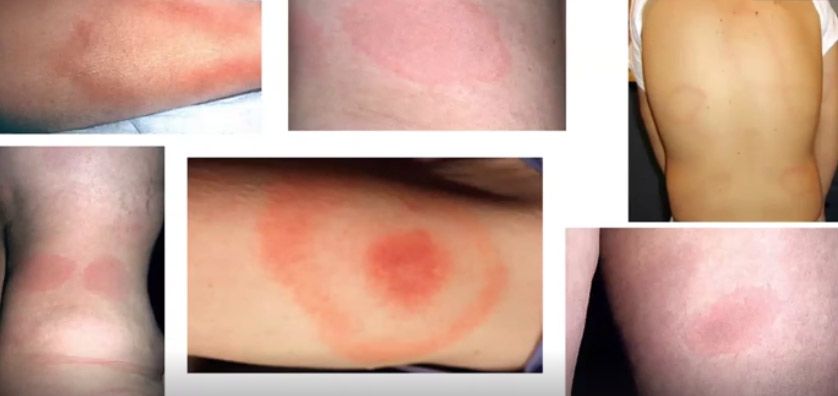'Lyme Disease: The Hidden Battle With Lyme Co-infections'
— Independent Medical Alliance (@Honest_Medicine) April 17, 2025
On this week's webinar, host and IMA Senior Fellow Dr. Yusuf (JP) Saleeby was joined by special guests Dr. Tom Moorcroft and Chris Jackman, FNP for an important discussion on combating chronic Lyme disease—including… pic.twitter.com/VT5e3zEWtS
Speakers: Dr. Yusuf (JP) Saleeby, Dr. Tom Moorcroft, Chris Jackman, FNP
Lyme disease is rarely a solo infection. Many patients battle multiple pathogens at once—most commonly Bartonella and Babesia. So how do these stealth infections complicate recovery, and why are they so often missed?
As part of IMA’s commitment to tackling chronic disease, this week’s webinar explores one of the most persistent and misunderstood conditions today. Join IMA Senior Fellow Dr. Yusuf (JP) Saleeby for a conversation with Dr. Tom Moorcroft and Chris Jackman, FNP, as they uncover the hidden battle with Lyme co-infections. Learn how Bartonella and Babesia differ from Lyme, why they evade detection, and what today’s practitioners are doing to improve testing and treatment strategies. If you’re new to this world—or struggling with chronic symptoms—this episode is for you.

Lyme disease is responsible for a significant number of chronic illness, impacting hundreds of thousands of people each year. As if dealing with Lyme itself weren’t difficult enough, experts warn that ticks commonly carry multiple pathogens, making diagnosis and treatment even more challenging.
According to a survey by LymeDisease.org, more than 50% of chronic Lyme patients report having co-infections, with nearly 30% carrying two or more pathogens. These co-infections, including Bartonella and Babesia, often intensify symptoms, complicate treatment, and prolong recovery.
At the Independent Medical Alliance (IMA), we’re deeply committed to fighting chronic illness in all its forms. Continuing from our last Lyme-focused webinar, Is it Lyme, Long Vax or Long COVID? from August 2024 our experts are back to address Lyme’s frequently overlooked co-infections. By raising awareness, promoting better diagnostic practices, and empowering both patients and healthcare providers with accurate information, we aim to help reduce the unnecessary suffering caused by misdiagnoses, delayed diagnoses, and inadequate treatment.
When Lyme Isn’t Just Lyme
Lyme disease frequently includes co-infections like Bartonella and Babesia, which significantly complicate diagnosis and treatment. According to Dr. Yusuf (JP) Saleeby, “Lyme co-infections are hidden drivers for many chronic health conditions… It’s important to know these root causes so as clinicians can better manage and improve long-term health.”
Misdiagnosis is common, with patients often labeled incorrectly with psychiatric disorders, autoimmune conditions, and now even long COVID. Nurse Practitioner Christopher Jackman explained, “Many patients don’t realize they have Lyme disease for years or even decades after contracting the disease [because the bacteria hide from the immune system].”
Bartonella: The Great Imitator

Bartonella mimics various conditions and is notoriously elusive. Dr. Tom Moorcroft tells the story of how we Bartonella has been mistakenly called Cat Scratch Fever, or Trench Fever, when the real cause might actually be infected lice. Forward-thinking physicians eventually recognized the common systems, including unusual stretch marks, neuropsychiatric symptoms like OCD, rage, and tic disorders linked to this infection.
These hallmark red streaks or striae are often mistaken for stretch marks. Dr. Saleeby described an extreme case:
“He was wrapped like a mummy with angry red striae where you wouldn’t expect stretch marks. They lightened with proper treatment.”
Multiple transmission routes include fleas, lice, and spiders, which often catch both patients and clinicians off-guard. Dr. Moorcroft highlighted, “Primarily, around here we’re seeing Bartonella from lice, sandflies, and fleas—that’s often overlooked.”
Babesia and the Overlap Illusion
Babesiosis usually does not cause a rash or other visible skin changes.
Babesia often mimics Bartonella’s symptoms, causing fatigue, a breathlessness known as ‘air hunger’, and excessive night sweats.
Christopher Jackman explained,
“Babesia symptoms often overlap with Bartonella, complicating accurate diagnosis. Patients may experience joint pain, sweats, chills, fevers, and gastrointestinal issues.”
Frequently misdiagnosed as menopause or anxiety, Babesia can cause severe anemia and respiratory distress. Dr. Saleeby described a patient repeatedly requiring blood transfusions, which baffled her doctors. It turned out she had severe Babesiosis, which meant her cells were directly infected by the parasites.
Broken Tests and Better Clues
Standard Lyme disease tests like Western Blot often fail, contributing to frequent misdiagnoses. Christopher Jackman emphasized that unless you’re testing early, standardized Lyme testing is often no good. “You need integrative testing to detect immune reactions.”
The problem with most current tests? They don’t work very well. But, advanced methods are in development, including digital droplet PCR and T-cell testing, for improved accuracy. Dr. Moorcroft explained that digital droplet PCR significantly enhances detection sensitivity, needing far fewer bacterial copies for a true positive.
Clinical judgment remains critical. Dr. Moorcroft recalled the concise words of his mentor, the late Dr. Charles Ray Jones, “Lyme is a clinical diagnosis supported by lab data.” Dr. Moorcroft says doctors need to listen closely to their patient’s story and see how they react to treatment. If symptoms emerge or change during the process, that can signal co-infections.
Treatment That Works
Successful Lyme treatment often combines pharmaceuticals and botanicals. Christopher Jackman noted how many botanical tinctures not only kill bacteria but also reduce inflammation and support immunity. In treating patients, Christopher often use tinctures like Cryptolepis and Anula, which have cross-coverage against multiple pathogens.

Effective treatment may require long-term commitment, typically spanning months or even years. Dr. Saleeby cautioned patients:
“We’re dealing with a marathon run, not a 50-yard dash. Sometimes you have to be patient.”
Promising treatments include newer antimalarials such as Tefenoquine. Dr. Moorcroft shared enthusiasm about this new treatment when combined with atovaquone, it shows potential to eradicate Babesia entirely, even offering sterile immunity in mammal models.
What Doctors Miss, and Patients Can’t Afford To
Listening carefully to patients is key to identifying and treating co-infections. Dr. Moorcroft stressed, “If you sit down with a patient and don’t interrupt for five minutes, there’s a 95% chance they’ll tell you what’s wrong and how to fix it.”
Many clinicians overlook critical symptom clusters like unusual skin markings, psychiatric shifts, or recurring anemia. Christopher Jackman emphasized to always remember the potential for co-infections:
“Whenever I get a young patient with Lyme, I immediately think Bartonella.”
Ultimately, recovery is attainable with informed and compassionate care. Dr. Moorcroft affirmed a hopeful message: you can get better from Lyme and its co-infections. He stressed that successful treatment comes from a comprehensive approach, addressing body, mind, and spirit.
At IMA, we strive to equip healthcare providers and empower patients to recognize these overlooked infections, ensuring accurate diagnosis and effective treatment, bringing hope and healing to those impacted by Lyme, its hidden co-infections, and all forms of chronic disease.
More on: Babesia | Bartonella | Christopher Jackman | Dr. Tom Moorcroft | Dr. Yusuf (JP) Saleeby | Lyme Disease | Tick-Borne Diseases




